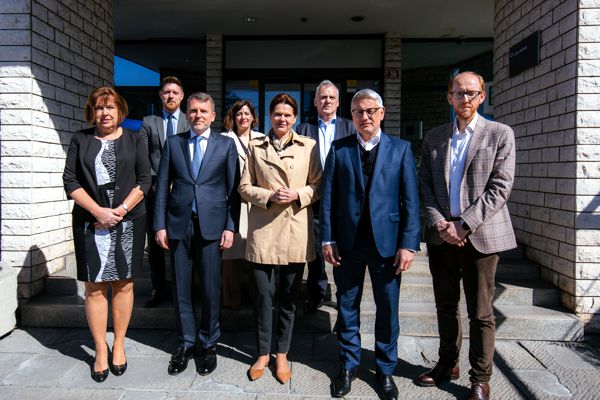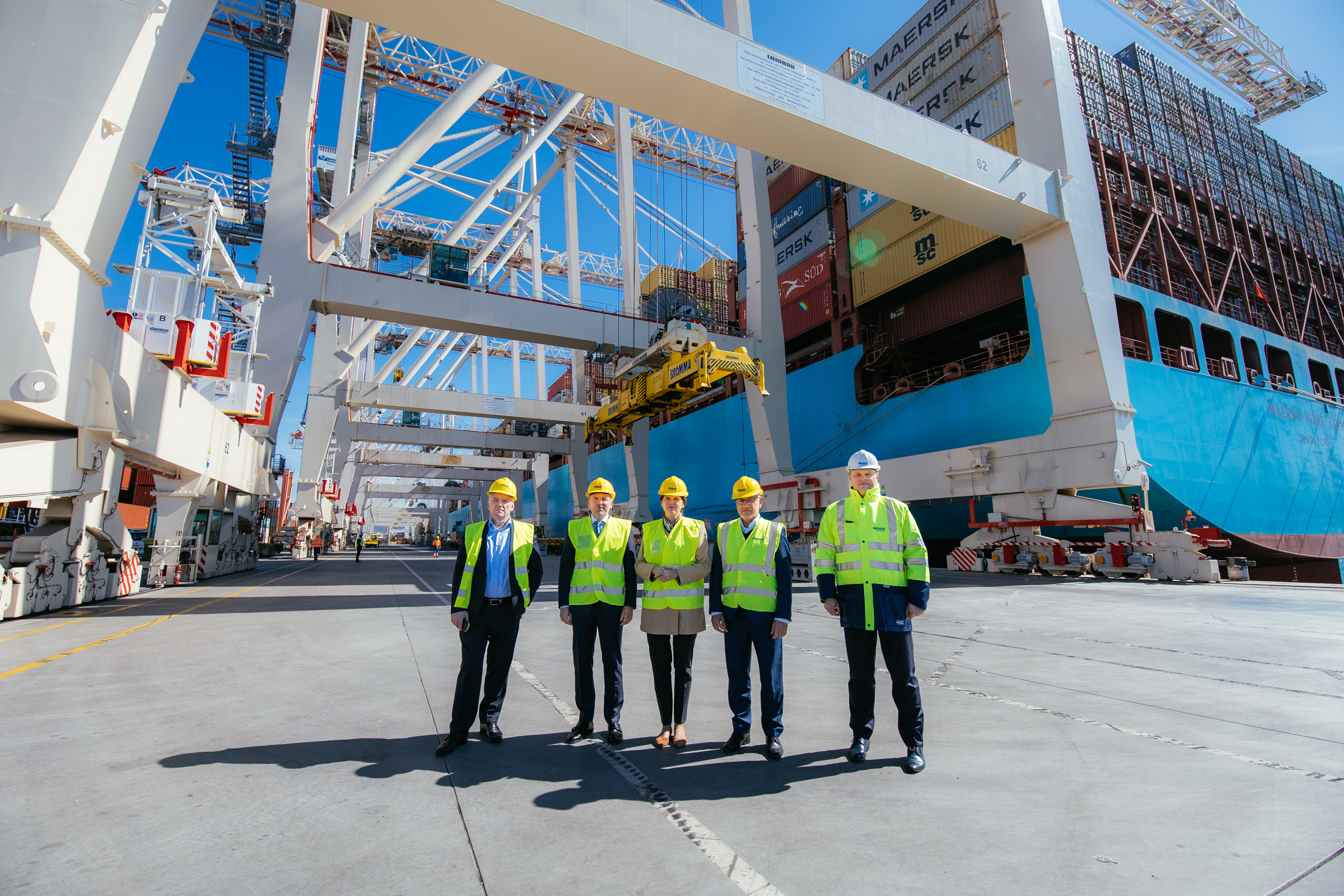During the working visit of the two Ministers, the President of the Management Board presented to the delegation the port’s operations and organisation, as well as the company’s results. Last year, the Port of Koper achieved excellent business results, increased growth in throughput of all commodity groups, and concluded the business operations with historic achievements in two strategic segments – containers and cars. Investments were actively pursued, with priority given to those representing a new development cycle for key terminals in the port. In June, the final section of the container quay extension was completed, providing a new berth and additional storage space, while activities to extend the northern part of the Pier were launched.
Several topical investment issues were discussed, with the emphasis on the fast construction of the second railway line ensuring a reliable rail link to the hinterland, as well as on the ownership relations that are the basis for the implementation of all the projects. They also addressed the issue of reliable electricity supply in the coming years, waste disposal from cargo and passenger ships and exchanged views on the role of the State in the further development of the port.
The delegation also visited the workplaces in the port and the major investments under way, and made a stop at the Container Terminal quay where the guests climbed to the top of the highest crane in the Port of Koper.
Boštjan Napast, President of the Management Board of the Port of Koper, expressed his satisfaction that the two Ministers had taken the time to visit the Port of Koper, thus showing their support for the business and development of one of the most important economic entities in the country: “Together we have raised key issues, in particular investment in the modernisation of Slovenia’s rail network, which is a prerequisite for us to continue to develop the port and maintain our competitive edge. We will only be able to accelerate this development step with the help of the State, and I am confident that we will work even more closely together in the future.”
“Luka Koper is one of the most important companies owned by the Republic of Slovenia, and it is also very closely linked to the country’s largest infrastructure project, the Divača-Koper second railway line. As a grantor, the Ministry of Infrastructure regularly monitors the projects and developments at Luka Koper, which are indispensable for the optimal use of the new line. Today, too, the development projects were discussed. Just as we expect the second railway line project to be completed within the deadlines that have been set, we also expect Luka Koper to complete its projects on time,” stressed Infrastructure Minister Alenka Bratušek, MSc, who added that these are the conditions for Luka Koper to remain one of the country’s most successful investments, which is of course what we all want.
Minister of Economy, Tourism and Sport Matjaž Han also expressed his satisfaction on his first visit to the Port of Koper, stressing that a well-functioning logistics sector is of paramount importance for the Slovenian economy, as most of Slovene companies are highly export-oriented: “A well-functioning port is key to attracting foreign direct investment to Slovenia, which has an important geostrategic location for foreign investors. We should also not forget its potential for tourism. The efficiency of the Port of Koper is therefore of vital importance for our economy and, moreover, for the Coastal-Karst region, both in terms of jobs and further development. I am glad that over the last decade, the Port of Koper has developed into one of the most modern ports in the northern Adriatic, connecting with neighbouring ports in Trieste, Rijeka, and Venice, and thus representing an important entry point to Europe for cargo from Asia. It is important for the future that it continues to develop its infrastructure, ensuring sustainable operations with the lowest possible environmental and ecological impact, and that it is supported by the State with the construction of the second railway line.”





